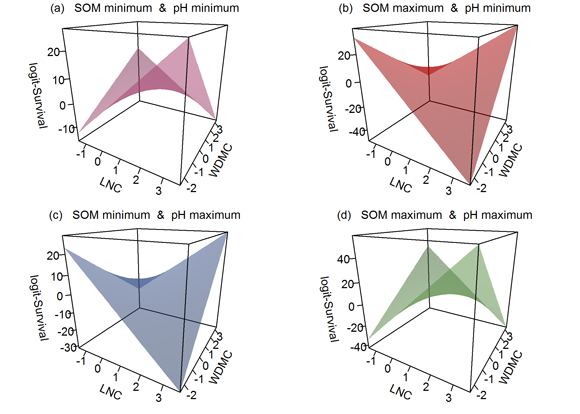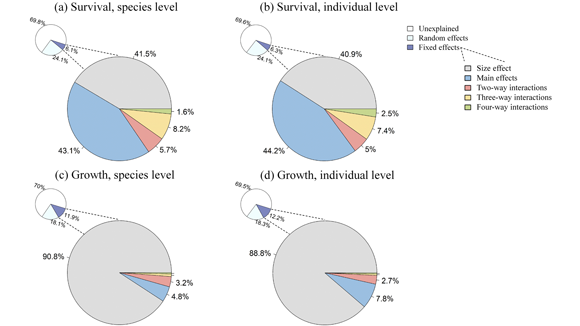Prof. Chengjin Chu’s lab in School of Life Sciences unveiled the complexity of trait-environment performance landscapes in a local subtropical forest
Source: School of Life Sciences
Written by: School of Life Sciences
Edited by: Tan Rongru & Wang Dongmei
That functional traits should affect individual performance, and in turn determine fitness and population growth, is a foundational assumption of the trait-based ecology. However, this assumption has not been supported by a strong empirical base. Previous studies have reported functional traits alone might poorly predict performance of plants. One important reason is that the effects of traits on individual performance should depend on the environment and thus exploring such trait-performance relationships needs to consider trait-environment interactions. Moreover, few studies explicitly included the higher-order traits × environments interactions despite the multi-dimensional nature of trait and environment. An alternative reason is due to the shortcut of characterizing all individuals of a species with its species mean trait value in previous studies in which the effect of intraspecific trait variation was ignored. Currently, there still lacks empirical studies simultaneously considering the above three aspects to test the foundational assumption of the trait-based ecology.
Chu’s lab in School of Life Sciences, Sun Yat-sen Univeristy established a 50-ha forest dynamic plot within the Heishiding Provincial Nature Reserve, Guangdong Province in 2011, following the ForestGEO (https://www.forestgeo.si.edu) protocol. The first census was completed in 2012 with 273,000 free-standing individuals with diameter at breast height more than 1 cm being tagged, mapped, measured and identified to species. The second census was finished in 2017. This study simultaneously measured two individual performance metrics (survival and growth), seven traits and ten environmental properties for each of 3,981 individuals of 205 species and then modeled survival/growth as a function of traits, environments and their interactions, and quantified the relative importance of trait × environment interactions at both the species and individual levels.
Results showed alternative functional designs and multiple performance peaks exist along environmental gradients (Fig. 1), indicating the presence of complicated trait × environment interactions. However, such interactions were relatively unimportant in our site, which had a relatively low environmental variation (Fig. 2). Moreover, individual performance was not better predicted, and trait × environment interactions were not more likely detected, at the individual level than at the species level.
This study suggests that trait × environment interactions might be safely ignored in relatively homogeneous environments, and future studies are encouraged to test the interactive effects of traits and environments on individual performances and lifelong fitness at larger spatial scales or along experimentally manipulated environmental gradients.

Fig. 1 The survival landscapes involving LNC (leaf nitrogen concentration) and WDMC (wood dry matter content) at four extreme environmental conditions with minimum or maximum observed values of SOM (soil organic matter) and pH.

Fig. 2 The average contributions of fixed effects and random effects to the variance of survival and growth at both the species and individual levels.
The above findings from Chu’s lab was published in
New Phytologist, entitled "The complexity of trait-environment performance landscapes in a local subtropical forest”, where Dr. Yuanzhi Li (postdoctoral fellow) and Yuan Jiang (Ph.D. candidate) were listed as the co-first authors.
Link to the article:
https://doi.org/10.1111/nph.16955
